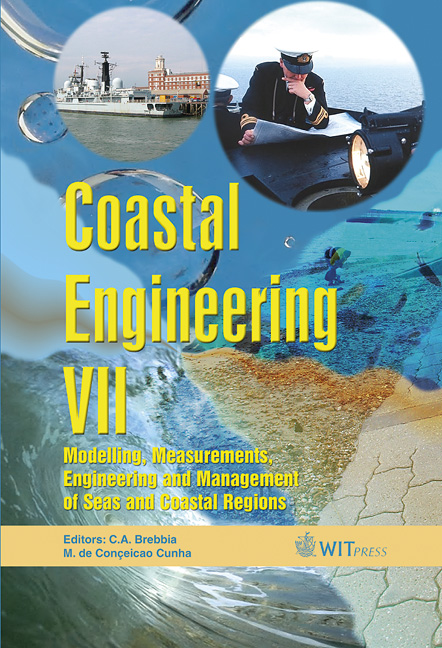Analysis Of Submerged Breakwaters Stability Design
Price
Free (open access)
Transaction
Volume
78
Pages
15
Published
2005
Size
757 kb
Paper DOI
10.2495/CE050191
Copyright
WIT Press
Author(s)
F. Taveira-Pinto
Abstract
The stability of a conventional low-crested breakwater above still-water level can be related to the stability of a non-overtopped structure, based on the usual stability Hudson’s or Van der Meer’s formulae. The required rock diameter for an overtopping breakwater can then be determined, for instance, by application of a reduction factor for the mass of the armour. Other formulations to the design of such overtopped structures can also be used. Studies with low-crested structures have shown that different sections of the structure (the front slope, the crest and the back slope) have different stability responses for similar sea state conditions, depending on the relative crest height. The behaviour of the total slope protection reflects the stability behaviour of each section component. If one wants to optimize the armour weight for similar security conditions in each part of the breakwater, then the stability curves in each section should be determined. The slope angle has significant influence on non-overtopped structures, but in the case of submerged structures the wave attack is concentrated on the crest and less on the seaward slope. The stability of submerged breakwaters appeared only to be a function of the relative crest height, the damage level and the spectral stability number, according to performed tests. In this paper a general review and comparison of the available formulae for submerged breakwater stability design is done. Design charts are presented as well as evidence of some physical modelling results. This information will be of some aid to designers, who are considering the use of these kinds of structures. Keywords: submerged breakwaters, stability, design formulae.
Keywords
submerged breakwaters, stability, design formulae.





